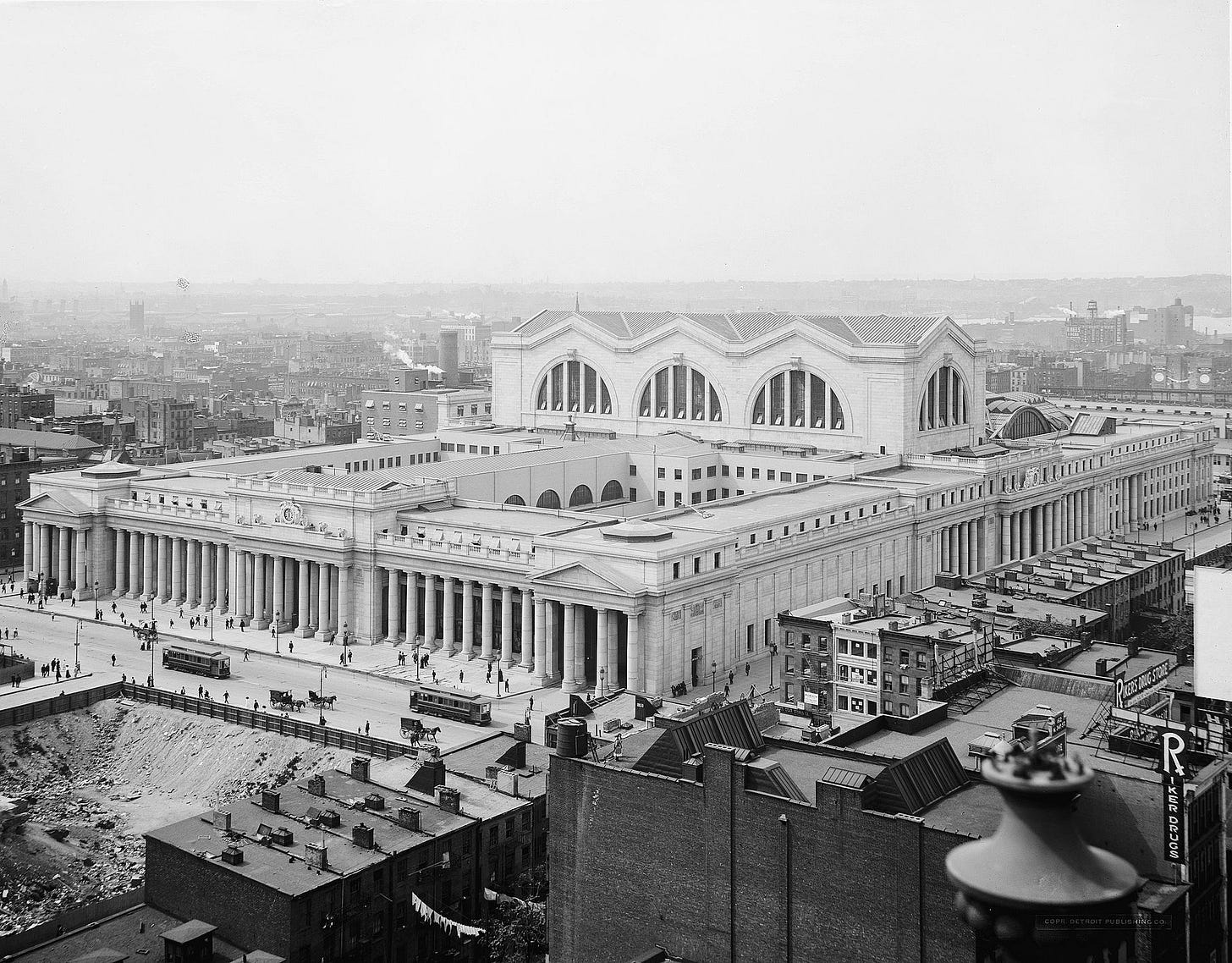what is historic preservation in an affordability crisis?
how movements from the 1970s are still impacting contemporary new york
According to the New York Times, you could get a brownstone in Carroll Gardens for $20,000 in 1970. This brownstone in the same neighborhood is now listed for $9.9 million. How did we get here? And is historic preservation partly to blame?
I recently attended a talk hosted by Citygroup on two movements that have had a deep impact on the contemporary urban fabric of NYC: historic preservation and community-based real estate development. These two movements, which emerged simultaneously during the 1960s and 1970s, show how different communities addressed the failures of mid-century urban development and how today’s planners are grappling with a changing urban landscape.
First, some background:
The historic preservation movement was created as a reaction to the demolition of major buildings that represented New York City’s architectural heritage, most famously the original Penn Station. The push for historic preservation was led by wealthy, often white residents who were chiefly concerned with preserving the aesthetic characteristics of the city’s buildings.
Community development corporations, on the other hand, were primarily started by residents in low-income neighborhoods who were trying to find ways to finance the redevelopment of properties that had decayed due to abandonment and extreme neglect. Instead of preserving the aesthetics of a community, they focused on preserving a social life and culture in a neighborhood left to decay by city managers.
Whether they focused on aesthetics or culture, historic preservation and community development leaders sought to preserve features of their urban landscape that they felt to be fading away. However, they are also products of a specific time in NYC’s history, namely one in which the decay and demolition of buildings was rampant. In the 1970s, the city was giving buildings away for $1, making them either easy to demolish (cue the historic preservationists) or cheap for community developers to rehab. But the city has changed a lot since the 1970s, raising the question: how useful are these tools today?
The elephant in the room is that the NYC real estate market has changed drastically in the last 50 years. In June 2022, the average sale price for a single-family brownstone in Manhattan was $7 million. Now, there is a crisis of affordability rather than an oversupply of a crumbling building stock. Any dilapidated multifamily building is now a gold mine.
This real estate boom has now priced community developers out of certain neighborhoods. One of the speakers at the Citygroup talk, representing a community development corporation that uses Low Income Housing Tax Credits and state subsidies to build projects at affordable rates, admitted that they can no longer build projects in Manhattan and are focusing on the outer boroughs.1 However, there are not significant protections in place to prevent housing costs from rising significantly in the outer boroughs, as they have been for the past several decades. Existing housing subsidy programs are not enough to support affordable housing development in Manhattan and this problem is spreading throughout all neighborhoods of the city.
There is an argument to be made that the historic preservation movement is now exacerbating this affordability crisis. Some neighborhoods with sweeping landmark protections over them as “historic districts” including Greenwich Village, SoHo, and large swaths of brownstone Brooklyn have become some of the most expensive in the city. While these neighborhoods are important facets of an architecturally diverse and historic city, they are also severely limited in the type of development that can take place, and the strict regulation makes renovation particularly expensive. This calls into question the applicability of our historic preservation framework in the current environment because while it protects an architectural heritage, it is contributing to the displacement of residents and the cultural heritage that the community development movement sought to preserve.
As the city changes, these tools for urban preservation and development seem out of place. While historic preservation is essential for maintaining a city with character, we also must find meaningful opportunities to develop the 500,000 additional housing units NYC will need by 2032. Community development corporations and other mission-oriented developers should also be able to build affordable housing throughout the city - not just in the outskirts. Affordability is one of the primary problems of our contemporary housing landscape, and we must update our toolkit to address it.
The solutions to our problems may need to be drastic - one of the attendees at the Citygroup talk pointed out that the conditions of our current economy and housing shortage are more akin to the 1940s, not the 1970s. This was a time in which a major demand for housing led the government to build nationwide public housing at an industrial scale. Ironically, the slum clearance and public housing policies of this time period are exactly what prompted the historic preservation and community development movement in the first place.
When it comes to housing, history feels like it’s on loop. But this is exactly why we study it right? To do what we can to prevent ourselves from repeating it. While historic preservation and community development feel ill-equipped for our current moment, they can teach us valuable lessons about the power of place, the importance of community-based processes for development, and the value of creating an urban fabric that feels like home. As we seek to address our industrial-scale housing problem, we should keep these lessons close.
Bennett
City Speak #45
The Department of Housing and Urban Development states: “Affordable housing is generally defined as housing on which the occupant is paying no more than 30 percent of gross income for housing costs, including utilities.” The way in which affordable rates are set for different income levels in housing projects is complex and could be the subject of an entire series. I am not personally a housing expert but could potentially write more about this if people are interested



